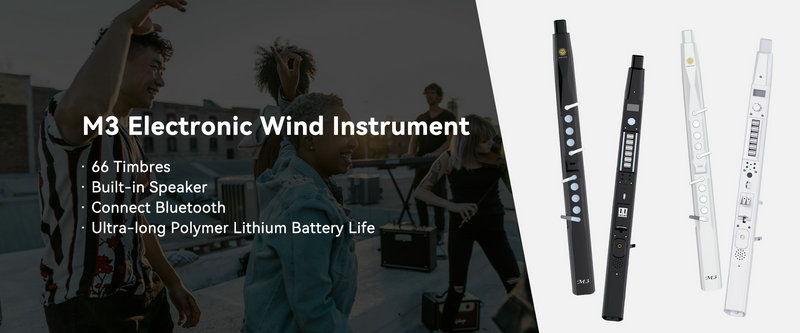The differences between various types of electric flutes can be quite significant and are influenced by several factors. Here are some of the key distinctions:
Sound Generation Mechanism:
Digital Synthesis: Some electric flutes generate sound through digital synthesis, creating a wide range of synthetic tones and effects. These can offer highly customizable and unique sounds.
Sampling: Other models use samples of real acoustic flutes to replicate a more traditional flute sound. This can provide a closer approximation to the timbre of an acoustic flute.
Connectivity Options:
USB Connectivity: Certain electric flutes come with USB ports, allowing for easy connection to a computer for recording, music production, or using software for sound manipulation.
MIDI Compatibility: Flutes with MIDI capabilities can integrate with other MIDI devices and controllers, expanding the possibilities for creating and performing music.
Key Layout and Mechanism:
Traditional Key Layout: Some follow a layout similar to a traditional acoustic flute, which might be more familiar for those with prior flute-playing experience.
Modified or Ergonomic Key Layout: Others have modified or ergonomic key designs to make playing more comfortable, especially for longer periods.
Range of Sounds and Effects:
Basic Sound Sets: Some offer a limited set of pre-programmed sounds, such as different flute types or basic instrument tones.
Extensive Sound Libraries: More advanced models may come with extensive libraries that include various instrument sounds, ambient effects, and synthesized textures.
Portability and Size:
Compact and Lightweight: There are compact electric flutes that are highly portable, making them suitable for on-the-go musicians.
Larger and Heavier: Some models are larger and heavier, which might be better for stationary use but less convenient for frequent transportation.
Price Range:
Entry-Level: Cheaper options often have fewer features and simpler construction, but can be a good starting point for beginners.
Professional or High-End: Expensive models typically offer superior sound quality, more advanced features, and better build materials.
For example, a beginner might prefer an entry-level electric flute with a traditional key layout and basic sound options for ease of learning. On the other hand, a professional musician might opt for a high-end model with advanced sound generation, extensive connectivity, and customizable settings to meet the demands of complex performances and studio work.
SUNRISE MELODY M3 Electronic Wind Instrument - The best-selling Electronic Wind Instrument
. 66 Timbres
. Built-in Speaker
. Connect Bluetooth
. Ultra-long Polymer Lithium Battery Life



